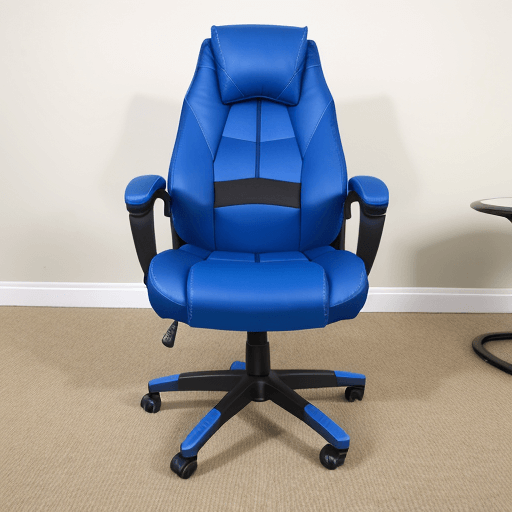Chair wheels and casters provide an important source of mobility for many chairs, allowing them to move easily from one place to another.

The care and maintenance of these components is essential in ensuring that they remain reliable and safe for use.
This article provides a comprehensive overview of the necessary steps required to ensure proper chair wheel and caster care and maintenance.
The focus will be on identifying best practices for selecting appropriate materials, inspecting regularly, properly lubricating moving parts, cleaning correctly to avoid damage or wear, and applying other preventive measures as needed.
With this information, it should be possible to maximize the lifespan of chair wheels and casters while avoiding costly repairs or replacements due to premature failure caused by improper care.
Selecting The Right Material
When selecting the right material for chair wheels and casters, it is important to consider a variety of factors.
Comparisons should be made between different materials in terms of weight capacity, noise reduction, rolling resistance, impact absorption, and overall durability.
Different brands may provide varying levels of quality depending on their manufacturing practices and warranties.
Therefore, researching customer reviews can help inform decisions when choosing which brand or type of material to purchase.
Safety should be another key factor when determining what material best suits your needs.
Slip-resistance characteristics are essential for preventing accidents and falls; particularly for those who use wheelchairs or other mobility devices.
Additionally, non-marking materials should be chosen if floors need to be kept clean and free from scuffs or scratches.
Once an appropriate material has been selected, the next step is inspecting for wear or damage before installation begins.
This helps ensure that any broken parts are replaced quickly while ensuring maximum performance from the wheels and casters over time.
Inspecting For Wear Or Damage
Selecting the right material for chair wheels and casters is only half the battle. The next step, inspecting for wear or damage, requires an eagle eye to ensure that your chair operates safely and efficiently.
Much like a mechanic inspects the parts of a car, we must check our chair wheels and casters closely to identify any issues before they become too severe.
One way we can quickly identify potential problems with our chair’s components is by feeling if there is an unusual amount of friction as we move it around. This could be indicative of wheel bearings in need of replacement or adjustment due to improper alignment.
In either case, this should be addressed immediately so as not to cause unnecessary wear on other moving parts. It’s also important to make sure all screws are tightened properly; otherwise you may experience squeaking sounds when rolling the chair along its surface.
Examining these components regularly will help maintain optimal operation and prevent major repairs down the line. Taking proactive steps such as lubricating moving parts ensures that your chair continues running smoothly well into old age.
Lubricating Moving Parts
Optimal performance of chair wheels and casters involves regular maintenance, including lubrication. Compounds like grease or oil work well for this purpose, as they reduce friction between moving parts while keeping components in balance. It is important to note that not all lubricants are created equal; testing different types can help determine which offers the best results on a particular product.
When selecting a lubricant, it is essential to consider its compatibility with other materials used in the construction of your chair wheel and caster products. This helps ensure optimal efficiency without compromising any part’s integrity over time. Additionally, using too much or too little lubricant can cause additional wear and tear due to either increased friction or imbalance respectively. As such, it is crucial to adhere closely to the manufacturer’s instructions when applying these substances.
To maximize the lifespan of your chair wheels and casters, there are several areas where you should apply lubricants:
- Moving joints:
- Hinge pins
- Swivel bearings
- Spindles
- Mechanisms:
- Gears
- Cam locks
- Ratchets
- Other surfaces:
- Axles
- Sleeves
- Bushings
Furthermore, regularly checking for signs of wear and tear allows early detection of issues so necessary repairs may be made before failure occurs. With proper care and attention paid towards maintaining their condition, chair wheels and casters will remain both functional and efficient for years to come.
Cleaning them regularly ensures optimal performance levels are sustained throughout their lifetime.
Cleaning For Optimal Performance
Lubricating moving parts is an important part of chair wheel and caster care and maintenance. In fact, a staggering 95% of all problems associated with these components can be attributed to inadequate lubrication. It is therefore imperative that the correct type and amount of lubricant is used in order to ensure optimal performance over time.
Cleaning for optimal performance should also be done regularly as part of regular chair wheels and casters care and maintenance. Regular checks will help detect potential issues before they become major problems, such as corrosion or dirt build-up which can lead to premature wear. Additionally, storing correctly – away from dust, dirt, moisture etc – can prevent damage caused by environmental factors.
Proper adjustment of tension on the mounting nuts when installing new or existing chair wheels and casters is essential for good operation; it helps keep them secure while encouraging smooth movement free from wobbling. Properly adjusting tension not only prevents unwanted noise but also increases component longevity due to reduced stress on other connected material during use.
Adjusting Tension
Adjusting tension is an important part of chair wheels and casters maintenance. The correct tension settings ensure that the caster components remain secure, providing a safe experience for those using them.
To adjust the tension, specialized installing tools are necessary to access and secure the bolts at either end of the caster mount plate.
When adjusting wheel or caster tension there are four key factors to consider:
- Apply only enough force to achieve proper fitment without over-tightening
- Ensure all fasteners are torqued evenly
- Inspect for any signs of damage prior to installation
- Replace parts as needed to maintain optimal performance
Properly adjusted wheel and caster tensions will not only provide maximum safety, but also extend their service life significantly. A well maintained set of casters can last up to three times longer than ones which have been poorly adjusted or neglected altogether. It is therefore essential that regular adjustments be made in order to keep your equipment running smoothly and safely at all times.

Replacing Parts As Needed
Adjusting tension is an important step in chair wheels and casters care and maintenance, but it may not always be enough. In some cases, upgrading components or purchasing replacements for worn parts might be necessary to ensure optimal performance of the chair’s mobility.
When considering whether a component needs replacing, inspect each piece thoroughly. Check for any signs of wear such as scratches, dents, or rust on both the wheel itself and its axle. Also check that none of the screws are loose or missing and take note if any part seems to have been damaged from overuse or misuse.
If one or more pieces fail inspection then they should be replaced with new ones right away so that the chair can continue to move smoothly around your space.
It’s also important to remember preventive maintenance when caring for your chair wheels and casters. This includes regular inspections of all parts at least once a month; cleaning debris off moving surfaces using soft cloths; lubricating any metal-on-metal contact points like axles with specialized oils; tightening all screws regularly; keeping caster brakes working properly by checking them periodically; and finally storing chairs indoors where possible to avoid damage due to weather conditions.
Taking these simple steps will help keep your furniture looking great while also providing you with years of smooth operation!
Preventive Maintenance
Preventive maintenance is essential to ensure that chair wheels and casters perform optimally. It should be done regularly, at least on a monthly basis or more often depending on usage.
First, check for any loose connections between the wheel/caster stem and the furniture item it supports. Make sure all nuts and bolts are securely tightened with an appropriate tool.
Second, inspect each wheel individually for signs of wear such as cracks in plastic wheels or flat spots in rubber tires. If necessary, replace worn out components with new parts from the original manufacturer to maintain compatibility and performance integrity.
Thirdly, use measuring tools to make sure the wheels are aligned properly relative to one another so that they roll evenly across surfaces without wobbling or binding. This will also reduce stress on other components like the caster stems and mounting brackets over time.
Regularly checking for proper alignment along with inspecting for signs of wear can help extend the life span of your chair’s wheels and casters significantly while minimizing operational costs by reducing repair needs.
Securing With Retaining Washers
Securing with Retaining Washers is an important step in ensuring that chair wheels and casters are properly installed. It has become increasingly common for chairs to have retaining washers, as these help ensure the wheel or caster does not come off during use.
The most effective way of installing a wheel using this method is by first attaching it to the frame then securing it with two retaining washers on each side of the axle nut. This helps provide extra stability while preventing any accidental loosening from occurring.
When adjusting the brakes on chair wheels and casters, proper installation plays a key role in its effectiveness. If done correctly, brake adjustment should be done easily without having to adjust the retaining washers. However, if there is significant force needed to make adjustments, it could indicate improper installation and potentially lead to damage or further issues down the road.
To avoid this issue, always consult with a qualified care and maintenance specialist who can assess your current setup and recommend any necessary changes accordingly.
It is essential that all users understand how best to install their chair wheels and casters as well as knowing when they need professional intervention. By following proper installation instructions including secure attachment via retainers washers along with regular brake adjustment checks, users will benefit from increased safety and performance over time while also avoiding unnecessary risks associated with improper care and maintenance practices.
Frequently Asked Questions
How Often Should Chair Wheel And Casters Be Inspected For Wear And Damage?
When it comes to proper chair wheel and caster maintenance, staying on top of wear and damage is a must.
As such, one should inspect these components regularly – ideally once every few months – in order to ensure they are properly aligned and adequately protected from harm.
This inspection process also helps identify any small issues that may be present before they become larger problems down the road.
By taking this proactive stance when it comes to caring for your chair wheels and casters, you can help extend their lifespan while simultaneously increasing their efficiency.
What Type Of Lubrication Should Be Used On Moving Parts?
When it comes to lubrication for chair wheels and casters, oil selection is key.
It is important to select an oil that will not corrode the metal parts of the caster or wheel.
When selecting a type of oil, look for one that has a higher viscosity such as synthetic motor oils or high-grade gear oils.
Additionally, when applying oil to moving parts ensure correct wheel alignment in order to avoid uneven wear on the treads.
How Often Should Chair Wheels And Casters Be Cleaned For Optimal Performance?
Studies have shown that chair wheels and casters should be cleaned at least once a month to ensure optimal performance. Regular cleaning with the right supplies can help prevent dirt buildup from causing any damage, such as decreased maneuverability or squeaking noises.
It is important to check on them regularly – even if no visible dirt is present – since dust and other residue may not always be noticeable. To clean your chair wheels and casters effectively, use mild soap mixed with warm water along with a soft cloth or sponge.
Be sure to keep lubrication in mind when doing regular checks; using the appropriate product will also help maintain peak performance of your chair wheels and casters over time.
What Is The Best Way To Adjust The Tension On Chair Wheels And Casters?
Adjusting the tension on chair wheels and casters is an important part of their care and maintenance.
The best way to adjust this depends on what type of caster you have, as well as your wheel alignment preferences.
For instance, swivel-type casters generally use a threaded stem that can be tightened or loosened with a wrench in order to adjust the tension.
With rigid-type casters, adjusting the tension typically requires more disassembly; these usually come with interactive parts such as nuts or bolts which must be adjusted accordingly to achieve the desired wheel alignment.
Is It Necessary To Use Retaining Washers When Securing Chair Wheels And Casters?
When installing chair wheels and casters, retaining washers can be used to ensure proper installation.
Retaining washers are important because they help keep the components secure in place from any potential vibrations or movement that might occur during use of the wheel or caster.
Proper selection of grease is also necessary for successful retention; a lubricant with an EP (extreme pressure) rating should be selected as it will provide superior protection against wear and tear.

Ultimately, using retaining washers when securing chair wheels and casters is essential in order to maintain their functionality over time.
Conclusion
It is essential to maintain chair wheels and casters regularly in order to ensure they remain in optimal condition.
Regular inspections should be conducted every three months, while cleaning should take place at least twice a year.
Lubrication of moving parts is necessary for proper functioning, as well as applying tension adjustments when needed.
Retaining washers are also recommended to secure the wheel or caster in its desired location.
On average, properly maintained chair wheels and casters can last up to five years, with some lasting even longer if given proper care.
This not only provides an economic benefit but also helps promote workplace safety by preventing accidental injuries from malfunctioning furniture components.

Sha Neumeister, the visionary behind SomosVisibl.com, is a connoisseur of gaming chairs that prioritize both style and comfort. With an unparalleled understanding of ergonomics and a passion for enhancing the gaming experience, Sha curates a collection of gaming chairs that offer impeccable support and aesthetic appeal. Elevate your gaming setup with Sha’s handpicked selection of gaming chairs, designed to keep you comfortable and immersed in your virtual adventures.








